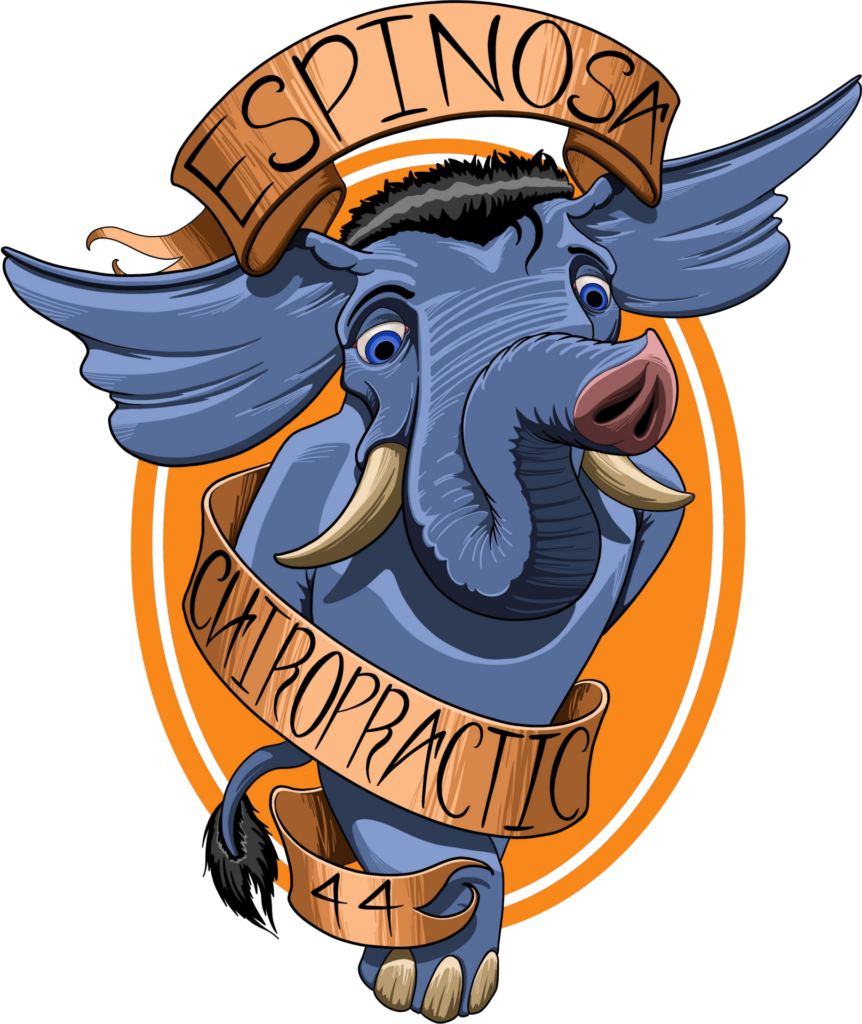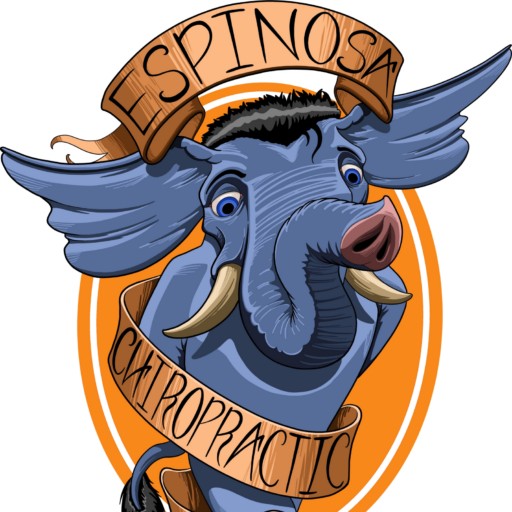Blog
Posture
Postural disorders, characterized by misalignments or abnormalities in the body’s posture, can have a significant impact on overall health and well-being. Addressing these issues is crucial, and chiropractors play a pivotal role in providing active solutions to alleviate discomfort and improve posture.
Chiropractors actively assess and treat postural disorders by employing a hands-on, proactive approach. Through a thorough examination, they identify imbalances, misalignments, and musculoskeletal issues that contribute to poor posture. This active diagnostic process enables chiropractors to tailor their interventions to the specific needs of each individual, recognizing that postural problems can vary widely among patients.
Chiropractors actively engage with their clients to educate them about the importance of proper posture. This involves not only addressing the immediate issues but also actively empowering individuals to actively participate in their own postural health. Through active communication and education, chiropractors guide their patients in understanding the detrimental effects of poor posture on the spine, joints, and overall well-being.
One active method employed by chiropractors to address postural disorders is spinal adjustments. Through precise and targeted manipulations, chiropractors actively correct misalignments in the spine, promoting optimal alignment and reducing strain on surrounding muscles and joints. This hands-on approach actively restores proper biomechanics, allowing the body to function more efficiently and reducing the likelihood of further postural issues.
Chiropractors also actively incorporate therapeutic exercises into their treatment plans. These exercises are designed to strengthen muscles, improve flexibility, and actively promote better posture. By actively engaging patients in therapeutic exercises, chiropractors empower them to actively participate in their recovery, fostering long-term improvements in postural alignment and overall musculoskeletal health.
In addition to hands-on interventions, chiropractors actively collaborate with patients to develop personalized plans for postural improvement. This may involve lifestyle modifications, ergonomic adjustments, and active strategies to incorporate better posture into daily activities. This collaborative approach emphasizes the active role that individuals play in maintaining and sustaining the benefits of chiropractic care for postural disorders.
Furthermore, chiropractors actively advocate for preventive measures to avoid future postural issues. Through ongoing consultations and active monitoring, they guide patients in making active lifestyle choices that support good posture and overall spinal health. This proactive approach aligns with the philosophy of chiropractic care, which emphasizes not only the resolution of existing issues but also the prevention of future problems through active patient engagement.
Dr. Espinosa actively addresses postural disorders through a comprehensive and hands-on approach. His active involvement in diagnosis, education, hands-on interventions, and collaborative planning empowers individuals to actively improve their posture and enhance their overall musculoskeletal health.
Contact us by clicking here or call (916) 457-8825
Diastasis Recti
Treatment with Chiropractic Care
Diastasis Recti, a common postpartum condition characterized by the separation of abdominal muscles, can significantly impact core strength and overall well-being. Seeking effective and non-invasive treatment options is crucial, and chiropractic care emerges as a promising avenue for recovery.
Chiropractors specialize in addressing musculoskeletal issues, making them well-suited to tackle the challenges posed by Diastasis Recti. Through targeted spinal adjustments and manipulations, chiropractic care aims to restore proper alignment, particularly focusing on the pelvic and spinal regions affected by the condition.
One of the primary benefits of chiropractic care is the emphasis on holistic wellness. Chiropractors understand the interconnectedness of the body, and their approach goes beyond symptom management. By addressing the root cause of abdominal muscle separation, chiropractic care promotes overall spinal health and facilitates the body’s natural healing processes.
Chiropractors utilize a range of techniques tailored to the individual needs of patients with Diastasis Recti. These may include gentle adjustments to realign the spine, specialized exercises to strengthen the core muscles, and guidance on maintaining proper posture to prevent further strain on the abdominal area.
Early intervention is key to successful Diastasis Recti treatment with chiropractic care. Individuals are encouraged to seek chiropractic assessment as soon as symptoms arise or after childbirth. This proactive approach allows chiropractors to develop personalized treatment plans that align with the severity of muscle separation, optimizing the chances of a successful recovery.
Chiropractic care for Diastasis Recti also extends to collaborative efforts with other healthcare professionals. Chiropractors may work in conjunction with physical therapists, nutritionists, and fitness trainers to provide a comprehensive and integrated approach to recovery. This team-based approach ensures that patients receive well-rounded care that addresses both the physical and nutritional aspects of Diastasis Recti treatment.
Choosing chiropractic care offers a non-surgical and drug-free alternative for individuals seeking natural and effective solutions. Patients often report not only improvements in core strength and muscle integrity but also a boost in overall vitality and well-being.
In conclusion, treating Diastasis Recti through chiropractic care provides a proactive and holistic approach to recovery. With a focus on spinal alignment, targeted exercises, and collaborative healthcare, chiropractors empower individuals to reclaim their core strength and embrace a healthier, more active lifestyle. If you’re navigating the challenges of Diastasis Recti, consider the transformative benefits of chiropractic care on your journey to revitalized well-being.
Over-Training
In the realm of professional sports, where substantial funds and extensive research are invested, a flood of information and misinformation inundates those of us engaged in more personalized training. At our chiropractic office, we emphasize the importance of training intelligently rather than relentlessly.
The phenomenon of overtraining is akin to a syndrome. It contradicts our inherent instinct to cease exercising merely due to fatigue. After all, how can one enhance strength and endurance without pushing through moments of weakness or weariness? The natural human reward system craves more of a good thing, disregarding the principle of diminishing returns. Contrary to the belief that more work equals greater rewards, over-training often results in the opposite.
Identifying signs of over-training is crucial:
- Under-performance
- Aches and pains
- Fatigue following a standard workout
- Changes in personality and mood
- Depression
- Loss of concentration
- Chronic fatigue
Moreover, the process of muscle-building hinges on a delicate balance between stress and rest. Muscles undergo microscopic tears during stress, and the repair process, leading to growth, occurs during rest. Achieving healthy muscle growth necessitates a state where muscle protein synthesis outweighs protein breakdown.
Many symptoms of over-training can be linked to imbalances in the nervous system, and this is where our expertise comes into play at our office. If your body is enduring excessive physical stress and not enough rest, we can nurture the body back to health. A program of chiropractic adjustment, rest, taking a break from weights, pursuing light cardiovascular exercise, and proper attention to hydration and nutrition will have you feeling yourself again in no time.
We can help you get in touch with your body: call our office to schedule an appointment today
Muscle Building
Muscle building is all about efficiency: the process begins when motor neurons initiate communication with the muscle, telling it to contract. As a chiropractor, we are concerned with the nerve pathways; ensuring that your body can communicate fluidly without the interference of subluxated vertebrae is what we offer to the serious and casual muscle builders alike.
So, what is your personal fitness goal? Whether you are aiming to look like Arnold Schwarzenegger or simply to build supportive muscles, making your body strong and resistant, our office can help. We take stock of the physical condition of your spine and provide proper adjustments that allow your brain and muscles to communicate without interference.
Along the way, muscles can become strained: weight lifting at too high a tempo, with too much weight, or for too long without reprieve can result in muscle spasm, joint sprain, tissue damage, and other counterproductive injuries. We practice modalities that heal these injuries quicker and get you back to pursuing the muscle gain that you are after.
Give our office a call to get started.
Bounce Back After Holiday Feasts: A Guide to Overcoming Overindulgence with Chiropractic Care
Introduction:
The holiday season is synonymous with joy, family gatherings, and, of course, delicious feasts. However, it’s not uncommon to find ourselves overindulging in festive treats, leaving us feeling sluggish and uncomfortable. If you’ve overeaten during the holidays, fear not – there are effective ways to get back on track. In this guide, we’ll explore practical steps to recover from holiday excess, with a special emphasis on the benefits of chiropractic adjustments for overall well-being.
1. Hydration is Key:
After a day of indulging in rich holiday fare, one of the first steps to recovery is staying hydrated. Water helps flush out toxins, aids digestion, and can alleviate bloating. Aim to drink plenty of water throughout the day to support your body’s natural detoxification process.
2. Gentle Movement and Stretching:
Engage in light physical activity to stimulate digestion and relieve discomfort. Gentle walks, yoga, or stretching exercises can help ease bloating and promote a sense of well-being. These activities also support spinal health, an integral component of overall wellness.
3. Mindful Eating Going Forward:
As you recover, consider adopting mindful eating practices to prevent overindulgence in the future. Pay attention to hunger and fullness cues, savor each bite, and choose nutrient-dense foods. This mindful approach not only benefits your digestive system but also supports your overall health.
4. Chiropractic Adjustments for Digestive Harmony:
Chiropractic care can play a crucial role in post-holiday recovery. Misalignments in the spine may impact the function of the nervous system, including the nerves that control digestion. Gentle chiropractic adjustments can help restore spinal alignment, promoting optimal communication between the brain and the digestive system.
Benefits of Chiropractic Adjustments:
- Enhanced Nervous System Function: Chiropractic adjustments aim to optimize nervous system function, facilitating efficient communication between the brain and the digestive organs. This can lead to improved digestion and nutrient absorption.
- Alleviation of Discomfort: Overeating can lead to discomfort, particularly in the abdominal area. Chiropractic adjustments may help alleviate tension in the muscles surrounding the spine, providing relief from digestive discomfort.
- Support for Healthy Posture: Proper posture is essential for optimal digestion. Chiropractic care focuses on maintaining spinal alignment, contributing to better posture and reducing the likelihood of digestive issues.
5. Balanced Nutrition:
As you recover from overeating, focus on incorporating nutrient-rich foods into your meals. Choose fruits, vegetables, lean proteins, and whole grains to provide your body with the essential nutrients it needs to function optimally.
6. Prioritize Sleep:
Adequate sleep is crucial for overall health and recovery. Aim for 7-9 hours of quality sleep each night to support your body’s natural healing processes.
Conclusion:
Overindulging during the holidays happens to the best of us, but the key is to bounce back with a proactive approach to your well-being. Hydration, gentle movement, mindful eating, and chiropractic care can work together to support your body’s recovery. If you’re seeking holistic assistance in regaining balance, consider scheduling a chiropractic adjustment. Your spine plays a vital role in your overall health, and a well-aligned spine can contribute to a healthier, more comfortable post-holiday season. Embrace the opportunity to prioritize your health and well-being, and let chiropractic care be an integral part of your recovery journey.
Nourishing Your Body and Mind: The Importance of Healthy Eating and Chiropractic Care in Winter
Introduction:
As the winter chill sets in, it’s crucial to pay extra attention to our health and well-being. The colder months bring with them unique challenges that can impact our physical and mental health. One effective way to navigate this seasonal shift is by adopting a wholesome and nutritious diet, complemented by chiropractic care. In this article, we’ll explore the symbiotic relationship between winter nutrition and chiropractic adjustments, shedding light on why they are essential for maintaining overall health during the colder months.
The Winter Wellness Connection:
1. **Boosting Immunity:**
Winter is synonymous with the flu season, making it essential to fortify our immune systems. A diet rich in vitamins, minerals, and antioxidants provides the necessary nutrients to fend off seasonal illnesses. Incorporating fruits, vegetables, and whole grains into your meals can significantly contribute to a robust immune response.
Chiropractic adjustments have also been linked to immune system support. Research suggests that spinal adjustments may enhance the function of the immune system by reducing stress on the nervous system. As a result, a well-aligned spine may contribute to better overall health and resilience against infections.
2. **Combatting Seasonal Fatigue:**
The shorter days and longer nights characteristic of winter can lead to feelings of fatigue and lethargy. Proper nutrition plays a pivotal role in sustaining energy levels. Complex carbohydrates, lean proteins, and healthy fats are essential for maintaining a steady release of energy throughout the day.
Chiropractic care can complement these efforts by improving spinal alignment. Misalignments in the spine can contribute to fatigue and discomfort. Regular adjustments may help alleviate tension, allowing the body to function optimally and reducing feelings of exhaustion.
3. **Winter Mood Elevation:**
Seasonal Affective Disorder (SAD) is a type of depression that occurs seasonally, often in the winter months. Nutrition can play a role in mood regulation, with certain foods promoting the production of serotonin, the “feel-good” neurotransmitter. Omega-3 fatty acids found in fish, flaxseeds, and walnuts, for example, have been linked to improved mood.
Chiropractic adjustments may also positively impact mental health. The spine’s connection to the nervous system means that misalignments can affect neurotransmitter function. By promoting proper alignment, chiropractic care may contribute to a more balanced and positive mental state.
Chiropractic Adjustments: A Key Element in Winter Wellness:
Chiropractic care focuses on maintaining the integrity of the nervous system by addressing misalignments in the spine. This holistic approach aligns seamlessly with the goal of achieving overall health, especially during the winter months. Here’s how chiropractic adjustments can enhance your winter wellness:
1. **Pain Relief:**
Cold weather can exacerbate joint and muscle pain. Chiropractic adjustments target misalignments that may be contributing to pain, offering relief and promoting a greater range of motion.
2. **Improved Circulation:**
Winter often brings with it decreased physical activity, leading to stagnation in the circulatory system. Chiropractic adjustments can enhance blood flow, ensuring that vital nutrients reach all parts of the body efficiently.
3. **Enhanced Respiratory Function:**
Proper spinal alignment can positively impact respiratory function. This is particularly relevant during winter when respiratory infections are more prevalent. Chiropractic care may help maintain optimal respiratory health.
Conclusion:
Incorporating a healthy diet and chiropractic care into your winter routine can be transformative for your overall well-being. By nourishing your body with the right foods and ensuring that your spine is properly aligned, you set the stage for a healthier, more resilient winter season. Take the proactive steps necessary to care for your body and mind, and embrace the winter months with vitality and strength. Your chiropractor is your ally in this journey, providing the expertise and guidance needed to navigate the winter wellness landscape.
Cores to the Fore
Core strength is so much more than just the middle of your body. The core is a network of muscles that have an influence or contribute to almost every movement we make. The core’s basic functions include: commencing movement, limiting and stabilizing movement, and transferring forces across the body. We focus on the importance of the second function: stability. For people looking to improve their suffering from back pain, or to prevent pain from occurring in the first place, a healthy knowledge of the core’s role is essential.
We will define core stability as the ability of these muscles to control the force we produce. In this way, a more stable core means that the structures and muscles of the back in particular are less vulnerable to aggressive movements that could cause damage. Therefore, the typical core strengthening crunch is of secondary importance. A better metric is how well you can achieve exercises including deadlifts, planks, and side planks.
For people looking to lead a life free of back pain, the core is undoubtedly a high priority; ensuring you exercise the core the right way is equally important. At our office iwe can help you create a back care plan that encompasses your personal fitness goals and the condition of your back. Give us a call and see what we can do together today.
Whiplash: no good for the neck
Whiplash, a term almost onomatopoeic in nature, evokes the visceral image of a cracking whip, vividly capturing the abrupt and forceful impact experienced by the neck during an unforeseen automobile collision. In the blink of an eye, the neck undergoes a rapid jarring, oscillating between forward-and-backward or side-to-side movements, resulting in damaged tissues and misaligned vertebrae. Even at seemingly modest speeds of impact, the aftermath can be profound, manifesting as severe pain, dizziness, headaches, and blurred vision. In the aftermath of such an incident, the immediate concern often transcends the bureaucratic processes of police reports or insurance claims. Instead, the paramount consideration becomes addressing the potential alteration to the spine caused by the accident.
Within our practice, we specialize in the targeted treatment of the structures and muscles profoundly affected by car accidents. Recognizing that proper spinal health hinges on the delicate balance and alignment of vertebrae and muscles, we confront whiplash as a formidable adversary capable of exceeding the spine’s tolerance for extreme movements. Ligaments strain, and vertebrae misalign under the impact, leading to a cascade of discomfort. Our approach involves employing spinal adjustments to meticulously restore proper alignment, alleviating any painful nerve impingements. Our commitment is to guide the cervical region back to its pre-accident state of alignment, facilitating the recovery of strained muscles.
Allow us to take care of your back in the aftermath of an automobile accident. Reach out to our office to schedule an appointment today, ensuring that you receive the specialized care needed to address the nuances of whiplash and restore optimal spinal health.
Walking
Muscles tensed and back stiff; intervertebral discs absorbing fluid and tightening; lack of circulation: this is your body on a sedentary lifestyle. So, take a hike! And no, this is not intended to be rude. At our office, we are seeing the toll that the 21st century is taking on human spines. Once upon a time, you might have had to walk to the market to get your food, or push a lawn mower to mow the lawn, or use your brain to parallel park your car. But the way of the future is automation: your lawn can now be mowed remotely, your food delivered on a schedule. This is to the detriment of all the working parts of the body and it is time people simply stood up.
A lifestyle that requires long hours sitting in front of the computer followed by long hours of leisure in front of a television screen can be defeated with a simple, committed approach to stretching and walking. If time is money, the spine must be factored into your overall budget. Budgeting a few minutes per hour to give your body a wiggle and your spine a stretch should become a priority. But for many people a lack of awareness creates this sedentary attitude. At our office, we can help you find ways to get moving.
The health benefits of a 30-minute walk:
- Increased circulation
- Better breathing
- Muscles lengthening and moving
- Increased mental acuity
- Decreased stress
- More range of motion and flexibility
So, take a walk and feel your body come alive. For help finding ways to incorporate more walking or stretching into your life, call our office. It may feel funny or almost counterintuitive, but we need to get moving again.
Embrace a Healthy Winter Lifestyle
Winter is a season that offers numerous opportunities to modify your eating habits, promoting both warmth and wellness. Say goodbye to processed fats and sugars and venture to your local winter market, where you will discover an abundance of nourishing foods: rich in vitamins, minerals, antioxidants, fiber, and healthy sugars and fats that can help you maintain a healthy lifestyle.
Whole foods over processed: Choose whole foods over their processed counterparts. Winter is the perfect time to savor the natural flavors and nutrients in seasonal produce. Opt for hearty soups, roasted root vegetables, and fresh salads to fuel your body with the essential nutrients it needs.
Portion control: In the winter, our bodies crave warmth and comfort, often leading us to indulge in larger portions. Keep in mind that we tend to consume 92% of what’s on our plates. By practicing portion control, you can instantly manage your calorie intake and maintain a healthy weight. This, in turn, reduces the strain on your back, especially the lower back, helping to prevent chronic pain.
Anti-inflammatory choices: For those dealing with winter-related aches and pains, it’s crucial to focus on anti-inflammatory foods. Incorporate ingredients like turmeric, ginger, and dark leafy greens into your meals. These ingredients can help reduce inflammation, alleviate discomfort, and promote faster healing.
Fish for warmth and health: In winter, fish can be a wonderful addition to your meals. It’s a lean protein source that contains essential fatty acids and high levels of vitamin D, essential for maintaining bone health and overall well-being. Enjoy a comforting bowl of fish stew or grilled fish for a heartwarming and nutritious meal.
Warm beverages: Swap out your usual sugary coffee for a soothing cup of herbal tea. Winter beverages like herbal teas and warm water with lemon can help keep you hydrated, boost your immune system, and provide comforting warmth without the excess calories and sugar.
Nourish your body throughout the winter season to maintain your health. Consider a holistic approach to wellness by scheduling an appointment with a healthcare provider who can help you stay aligned, manage muscle tension, and support your nervous system. Don’t hesitate to reach out and make an appointment today to ensure your winter is filled with both warmth and well-being.



